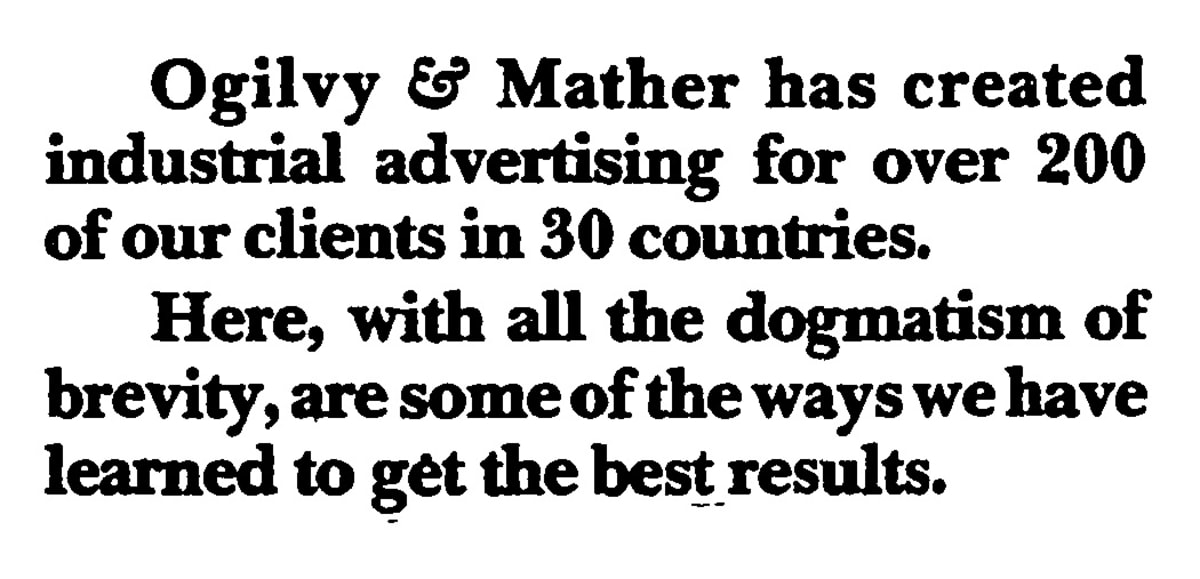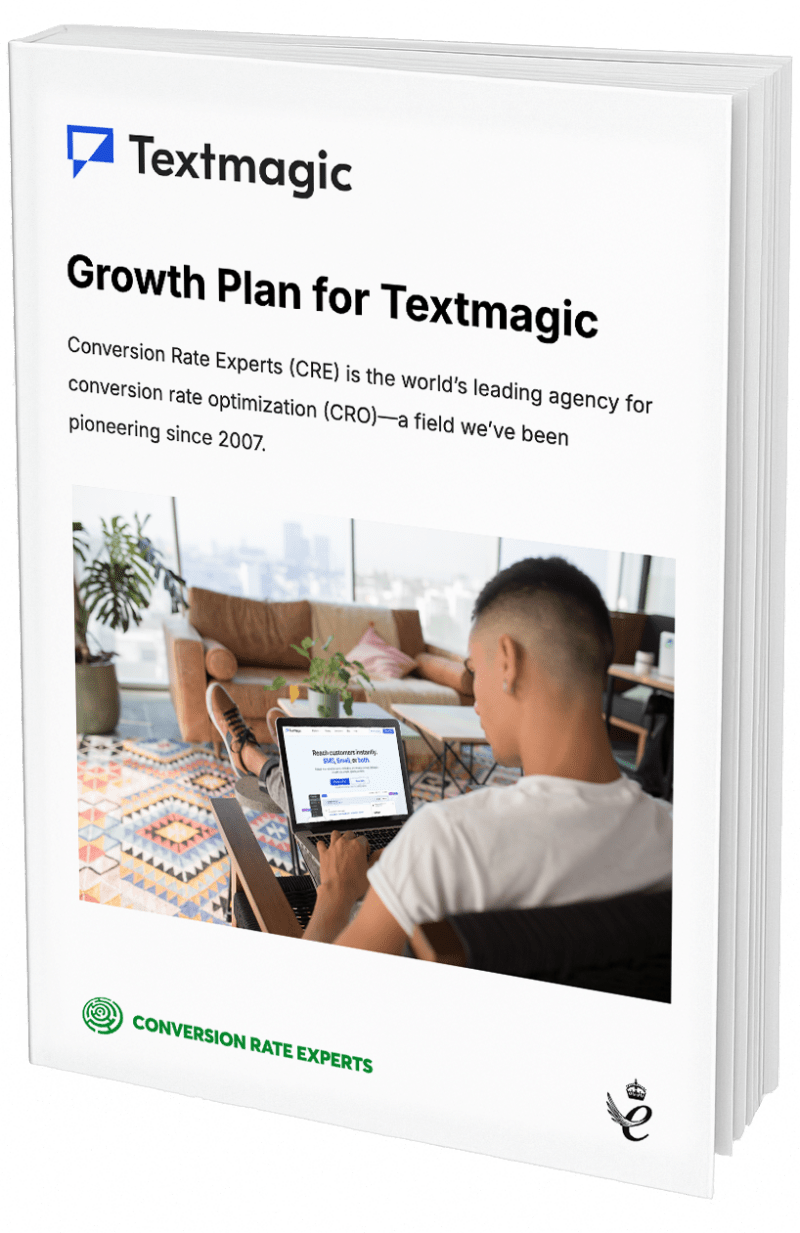All you need is a slight edge

After the coffee break on the morning of the first day, he noticed that one of the seats in the front was empty. It remained that way for the rest of the seminar.
The marketer needed all the revenue he could get and was concerned that the attendee must have hated the presentation so much that he bailed out during the first day’s coffee break. Or was it some family emergency? He had to find out, so he called the person and asked why he left so soon.
“I got my money’s worth in that first session, so I left in order to implement it.”
That’s a business owner who recognizes that all he needs to beat his competition is a slight edge—as long as he doesn’t merely think about it, but implements it.
Four (not so) slight edges you can apply to your own website
At Conversion Rate Experts, we are long-time fans of the traditional ads created by Ogilvy & Mather. Their style and clarity stands out from so many ads that seem more trendy and wordy than effective.
An excellent example of their handiwork is in the ad below: How to create industrial advertising that sells. Today we know “industrial advertising” as “B2B”.

Ogilvy lists 13 techniques in this ad, but we want to focus on four that are especially useful.
Slight Edge #1: Lead with authority
From a very early age, we learn to pay attention to some people more than others. We understand that authority figures like our parents and teachers carry more weight—at least until new “authorities” come along.
But while our authority figures inevitably change, the fundamental programming persists—especially in advertising and sales. We continually ask who is talking to us and whether we should pay attention.
Ogilvy wastes no time in establishing its authority at the beginning of the ad:

Does your website start this way? Will your visitors already know who you are and why they should listen to you? It’s risky to assume that they will, especially because people who bounce away will not spend the time to tell you why.
Slight Edge #2: Give value first
Have you heard of “blind bullets”? No doubt you’ve seen them. They’re bullet points that tease, where you’re told about something interesting—like “what never to eat on an airplane”—but you need to buy something in order to get the answer. (In the case of this famous bullet, the answer was “the food.”)
Sometimes these teasers work well, but they can also put off many readers who dislike being teased. Notice what the Ogilvy ad does instead:
- It doesn’t say: “The key thing readers must do in order for their industrial ad to work”; instead it explains: “Get the reader to participate” and goes on to give an example.
- It doesn’t say: “Four ways to get more for your money” but instead has four useful bullets (see 10-13) about using 2-color printing vs. 4-color, and other tips.
You’re left with the feeling of: If I get these tips for free in an ad, I wonder what I’ll get when I’m a client?
Here’s what may be the ultimate online version of giving before you get: A guy named Marcus Sheridan built a company that installed in-ground swimming pools. The business thrived—until the recession of 2008 hit. What do you suppose people will cut back on first during a recession? In short order, he went from a waiting list of customers to the specter of losing his home.
As a last gasp, with time now on his hands, he decided to put posts up on his site, covering everything he knew about pools.
This effort saved his business. Not only did Google rank him as highly authoritative, but customers came to him pre-sold. He didn’t have to answer many objections and explain all the nuances: they devoured his website and concluded he differed from all the other pool contractors. They called up, knowing what they wanted.
You can read more about Marcus’s story—and how to apply it to your business—in his book, They Ask You Answer.
Slight Edge #3: Long copy is your friend
Of course, it’s a good idea to be succinct wherever possible. But the goal is not succinctness—it’s conversions. The Ogilvy ad (bolding ours) makes a great point:
Ogilvy & Mather has prepared many industrial advertisements with very long copy. Yet readership research shows that the vast majority of the readers of any advertisement never get beyond the headline. Since so few people read the copy at all, why does Ogilvy & Mather recommend long copy so often?
The answer is that those relatively few people who read the copy are prospects for your product or your service.
If you aren’t in the market for a product, you are unlikely to read an advertisement for it, no matter how long or short the copy. (Most readers of The Wall Street Journal have little interest in industrial advertising—or Ogilvy & Mather. Chances are they haven’t read this far.)
But real prospects—especially industrial prospects responsible for spending large sums—are hungry for information. Research shows that industrial advertisements with really long copy actually tend to get read more thoroughly than advertisements with shorter copy.
You might be able to sell a candy bar with very short copy. But you could never make a case for buying a Cessna Citation in a handful of words.
Our experience confirms what Ogilvy says. We tested copy that was several times longer than the control, and it won. That does not mean long copy always wins; it means copy should be long enough to deliver the detail and persuasion necessary to do the job. If the message is complex, don’t shy away from testing long copy.
Slight Edge #4: Make the next step easy
Prospects come in different temperatures. Warm prospects may be returning to your site after doing earlier research and they’re ready and perhaps eager to buy. Colder prospects are another story. They may still need convincing and cultivation after reading your webpage. One way to do that is to make the very next step not only clear, but low risk. Here’s how Ogilvy does it:
These are only a few of the ways to make industrial advertising more effective. Ogilvy & Mather has a one-hour slide presentation with 75 more facts that can help make the difference between outstanding and mediocre industrial advertising.
If you are interested in seeing this full presentation, please write on your company letterhead to any of these heads of Ogilvy & Mather offices….
Notice how the next step is not to speak with someone in sales, or to fill out a questionnaire with company details, but to receive a presentation with more facts. It’s something that can appeal to both warm and cold prospects alike.
Does your website propose a low-risk next step for visitors to take? You may feel that the next step should be the “buy” button because you have a great guarantee that removes risk. It’s worth testing other calls to action that feel less risky to the customer than buying something and hoping that the refund and return process will, in fact, be smooth.
One thing we’d test
Ogilvy said that industrial customers differ from consumers because they are “hard-nosed” and “need an airtight argument to be convinced.” Industrial customers may indeed be that way, so it’s interesting that Ogilvy leads the piece by saying that:
“…the people who develop industrial advertising are the same people who develop consumer advertising.”
Those people may be fully qualified for both, but it may also be the case that industrial customers disagree. They may feel better served by hearing about people who are “specialists in industrial advertising”, even though the principles largely overlap. If we need kidney surgery, we’d want to hear all about the kidney surgeries our doctor had done, and may not be more comforted knowing that she also does spleens and livers.
Slight edges can tip big scales
Perhaps you have a product or service that’s vastly superior to what your competitors offer; if so, then congrats. But if your competition is plentiful and stiff, then imagine your prospect using a scale to weigh your value proposition against your competitors.
And when those scales tip, make sure they tip your “weigh.”
How much did you like this article?
What’s your goal today?
1. Hire us to grow your company
We’ve generated hundreds of millions for our clients, using our unique CRE Methodology™. To discover how we can help grow your business:
- Read our case studies, client success stories, and video testimonials.
- Learn about us, and our unique values, beliefs and quirks.
- Visit our “Services” page to see the process by which we assess whether we’re a good fit for each other.
- Schedule your FREE website strategy session with one of our renowned experts.
Schedule your FREE strategy session
2. Learn how to do conversion
Download a free copy of our Amazon #1 best-selling book, Making Websites Win, recommended by Google, Facebook, Microsoft, Moz, Econsultancy, and many more industry leaders. You’ll also be subscribed to our email newsletter and notified whenever we publish new articles or have something interesting to share.
Browse hundreds of articles, containing an amazing number of useful tools and techniques. Many readers tell us they have doubled their sales by following the advice in these articles.
Download a free copy of our best-selling book
3. Join our team
If you want to join our team—or discover why our team members love working with us—then see our “Careers” page.
4. Contact us
We help businesses worldwide, so get in touch!
© 2025 Conversion Rate Experts Limited. All rights reserved.
















